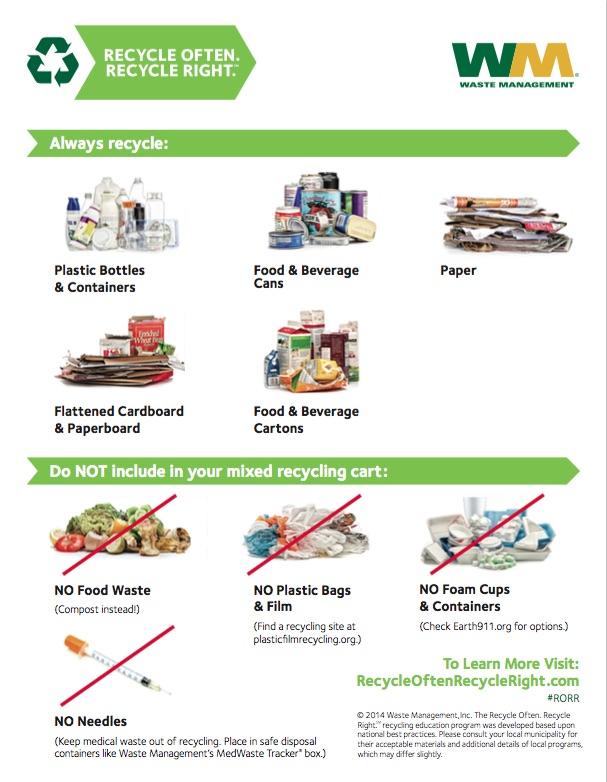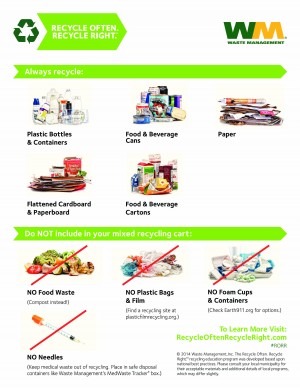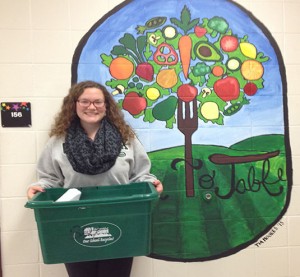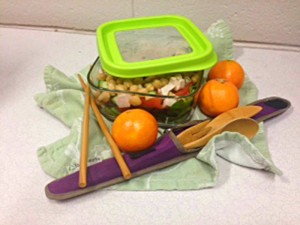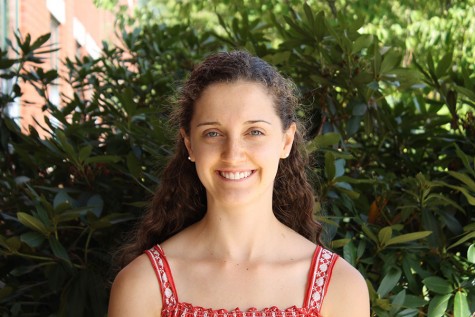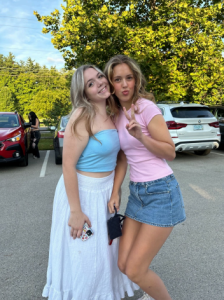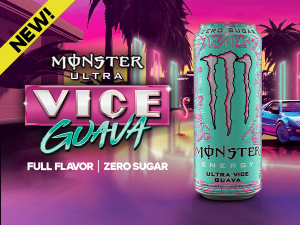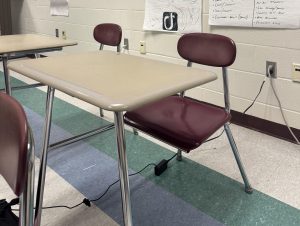What is recyclable?
Waste Management (WM) provides an image of what to recycle, alongside trash that doesn’t belong.
January 4, 2016
Recycling bins in every classroom and hallway, morning announcements, articles in the CavChron, and posters… all of these are important parts of the Green Group’s effort to establish a recycling program at Hollis Brookline High School; however in the end, it won’t necessarily make a difference — the only way to really create sustainable change at our school is to garner the support and participation of every student and staff member.
“I still see a lot of paper going into the regular trash. I’m still seeing bottles. I think it’s just a habit,” says Maryanne Rotelli, advisor for the Green Group, “Make sure you’re [recycling]. I think right now just raising awareness is really the biggest thing we have to work on.” For a school that hasn’t been recycling for three years, a strong learning curve is not surprising.
Let’s talk about plastics. Bottles from the vending machines in the caf? Recyclable. Dunkin’ Donuts iced coffee cups, lids, and even those orange straws? Recyclable. Even though they’re small, don’t forget those little cream cheese cups you get with your bagel; those are recyclable too. Juice bottles, milk bottles, yogurt containers (store-bought and the granola parfaits from the cafeteria), applesauce cups, fruit cups, plastic silverware, smoothie cups, lunchables trays, hummus and guac cups are also recyclable.
Paper products are recyclable too. Graph paper, lined paper, sticky notes, newspapers, magazines, even reinforced paper with the plastic edge, teacher handouts, hall passes, flash cards, note cards… Recycle it all! Even paper bags are recyclable. This means that as soon as you are done with your bagel, those brown Dunkin’ Donuts bags can go in the green bins too.
Cardboard is just really thick paper. Animal cracker boxes, pretzel boxes, any other cardboard packaging from your lunch (such as the lunchables package), old notebook covers, cardboard poster boards, and any cardboard boxes should all be recycled.
“Some places may take foam as recyclable, but the facilities that our recycles go to do not process foam,” says Rotelli. That’s a no-go for the hot drink Dunkin’ Donuts cups. For milk bottles, only recycle the plastic bottles; not the cartons. Take ten seconds to quickly rinse your waste before recycling it to make sure it is clean. A bin of empty milk bottles sitting in CavBlock for a week is sure to get smelly.
It’s important to remember that recycling more often is a good thing, but only if it doesn’t cause you to generate more trash overall. Just because the school recycles, this does not mean students and staff should get into habits using recyclable products in place of reusable products.
Remember the saying “reduce, reuse, recycle”? Those words are meant to be practiced in that order. It’s important to do your best to reduce your overall waste, then reuse any waste you can (such as bottles, jars, food containers, wrapping paper, plastic baggies…) and, as a last resort, recycle any leftover waste that you can.
Recycling reduces the pollution and contamination of limited resources such as water, air, and soil, all of which are important. Consider the fact that our food grows in soil, and gains nutrition from the air and water. If we contaminate these resources we, in turn, contaminate our food and ourselves.
It is easy to feel separated from the implications of everyday actions, but when looking at the big picture, you might realize what a big impact recycling can have on one’s health. Not only is it better for your well-being, it also benefits animals and plants. Support yourself, your school, your world, and your future. By making better choices with your garbage, you can impact the health of the environment in a positive manner, starting right here at Hollis Brookline High School.



